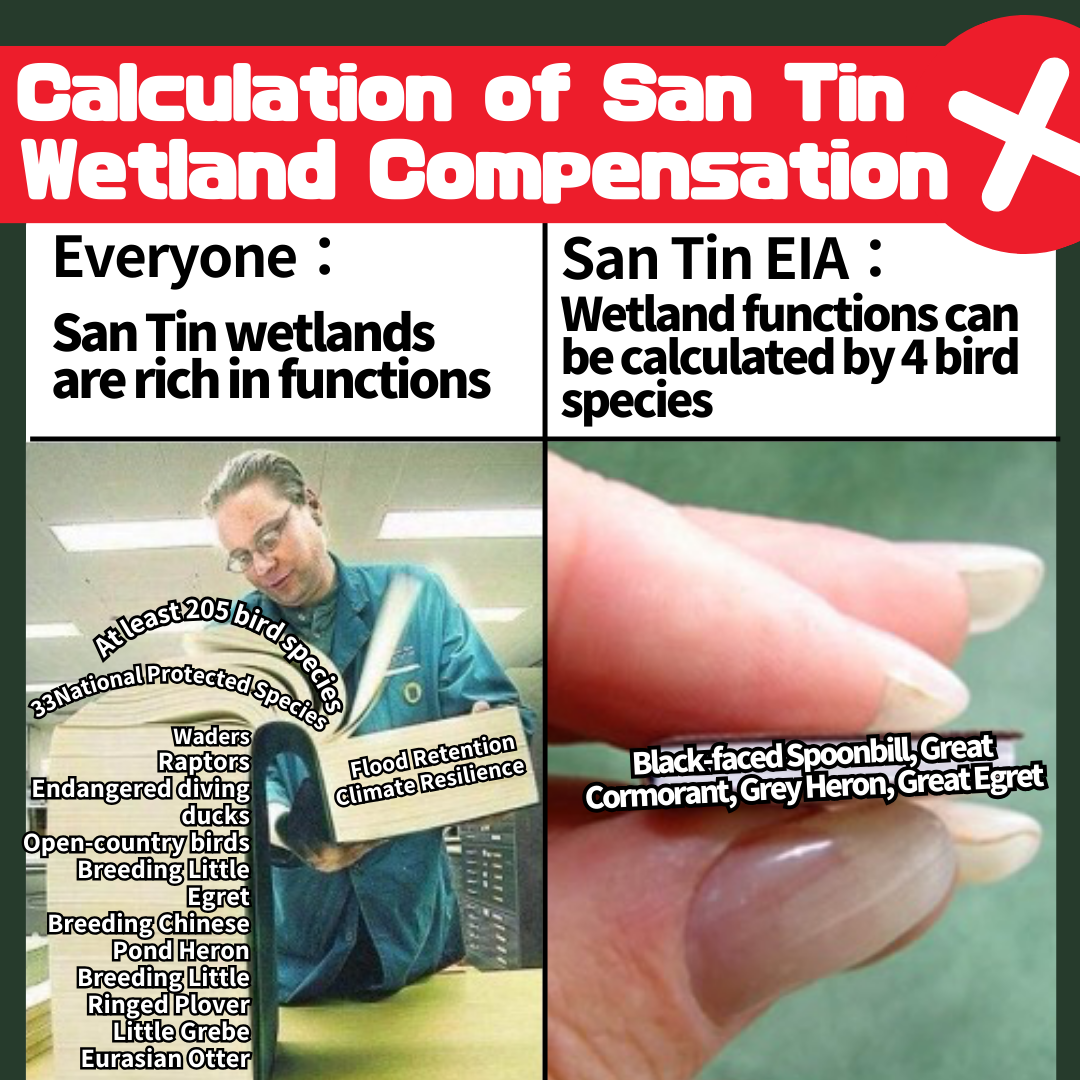Since the announcement of large-scale reclamation of San Tin fishpond wetlands in May last year, the government has frequently emphasized that there will be no net loss in wetland ecological functions. Can wetland compensation truly compensate for what being filled? Can wetland compensation only focus on "quality" instead of "area"?
Upon reviewing the Environmental Impact Assessment (EIA), we found that the government's method of calculating wetland compensation is highly misleading. Apart from selecting only 4 bird species as indicators for calculation, using bird density (number of birds ÷ hectares of a certain area) to estimate the "functional value" loss and the corresponding compensation requirements. Besides, the compensation wetlands would also need to wait for 15 years...
(1) Mammals such as the #Eurasian Otter , insects, amphibians, and reptiles.
(2) Bird species with different feeding habits, such as #waders that primarily feed on invertebrates.
(3) Birds highly sensitive to disturbance, such as Diving Ducks (including globally critically endangered Baer's Pochard, globally vulnerable Common Pochard, and Tufted Duck of Local Concern), Dabbling ducks, and Nationally Protected Raptors.
(4) Bird species that breed or raise chicks in fishponds, such as Chinese Pond Heron, Little Egret, Little Grebe, and White-breasted Waterhen .
(5) Open-field birds, such as the critically endangered Yellow-breasted Bunting and other land birds.
However, the scale of the Fung Lok Wai residential development, which occupies 4 hectares for development and 76.1 hectares for compensatory wetlands, is much smaller than that of the San Tin Technople. Moreover, the development sequence is "compensation measures commence first, development follows" instead of "pond filling first, compensation later". Additionally, the habitat conditions in Fung Lok Wai are somehow different from that in San Tin. We consider there is a lack of comparability. What's even more important is that construction has not yet begun in Fung Lok Wai, so the effectiveness of compensation measures is still unknown. It raises questions about the confidence of the authorities and consultants in using such data and claiming that ecological functions can be enhanced.
The ecological compensation for such a large-scale wetland reclamation claimed by the Department seems to be lacking scientific basis, and run counter to the wetland planning principles followed in the past 30 years. The development is going to undermine the uniqueness of Deep Bay (also known as Shenzhen Bay) in the Greater Bay Area, and also China's reputation as the host country of the 15th Conference of the Parties to the Convention on Biological Diversity.
The San Tin EIA was submitted to the Environmental Impact Assessment Subcommittee for discussion today (18/3). We urge the member to rigorously scrutinize the report and not approve such a flawed assessment report.
The "San Tin Technopole Outline Zoning Plan" has started a 2-month public consultation. Let’s stand firm for San Tin. Submit your opinions to the Town Planning Board before 8th of May https://www.tpb.gov.hk/en/plan_making/S_STT_1.html







